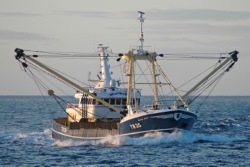Scallop fishing techniques could be used to remove sludge from legacy ponds at Sellafield if a second stage of technology development is successful.
 |
Scallop trawlers deploy a robust mechanism on the seabed to gather scallops from their habitat among rocks, rubble, sea grass, sand or mud |
The unusual application of fishing techniques to nuclear clean-up comes after the engineering company Barrnon, based in Sellafield's home county of Cumbria, worked with a local support service for small and medium companies called Innovus which was set up by the UK's National Nuclear Laboratory (NNL) along with the University of Manchester.
Barrnon's technology is used on commercial fishing vessels and with Innovus' support the company worked with NNL to devise a version of its scallop trawling gear that would be suitable for use at Sellafield's ponds. Over several decades, corrosion products from stored fuel rods have combined with wind-blown material to produce a layer of sludge at the bottom of certain open-air ponds. Innovus said that a working prototype to remove the sludge impressed Sellafield managers enough for them to take up the project and contract Barrnon to continue development "with a view to it being used at the Sellafield site."
Adrian Davis-Johnston of NNL and Innovus said, "Innovation comes from the most unlikely places." The head of Sellafield Ltd's Technology Demonstration Alliance, Neil Smart, concluded: "The centuries old principles of the fishing industry are not the first place one would look... but the value of the technology transfer approach has certainly been proven in this product."
Across several projects Sellafield aims to invest £500,000 ($760,000) in the first year of a joint program with Innovus to "harness the innovative potential of small business in addressing the challenges it faces in meeting its mission at the Sellafield Site."
Innovus said that it is funded by the Nuclear Decommissioning Authority, the public body that owns Sellafield in common with the rest the facilities and materials created during Britain's national project to develop nuclear science and technology.
Researched and written
by World Nuclear News




_18570.jpg)
_18938.jpg)
_33584.jpg)
_82983.jpg)





